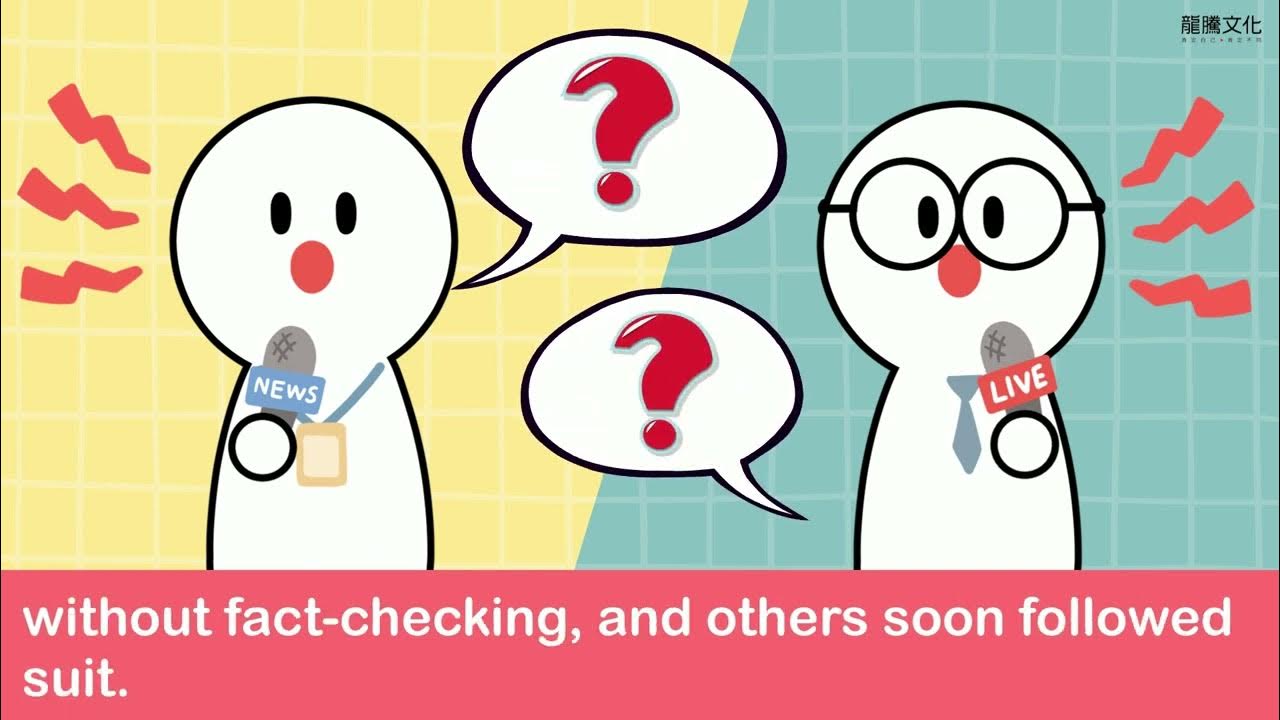Fake News einfach erklärt (explainity® Erklärvideo)
Summary
TLDRTim, a young man navigating the internet, becomes increasingly concerned with the rise of fake news. He explores its definition, noting how it spreads misinformation to reinforce existing opinions or influence undecided voters. Fake news, often designed to look like legitimate reports, can also drive revenue through ads when shared on social media. Tim learns to identify such news by checking sources and being cautious of misleading websites. The video highlights the challenges of living in a 'post-factual' age and provides tips for spotting and avoiding fake news.
Takeaways
- 🌐 Tim grew up with the internet and uses it to stay informed about world events.
- ❌ Fake news refers to deliberately false reports, mainly spread online, and is not a new phenomenon.
- 📜 Historical examples of false information include the 1844 story of balloonist Monk Mason and wartime propaganda.
- 🗳️ Fake news can influence political debates by reinforcing existing beliefs rather than changing opinions.
- 🦸♂️ People are more likely to believe fake news that aligns with their pre-existing views, as shown by the example of the 'Superman-president' story.
- 🧠 Post-factual thinking makes it harder to correct misconceptions, especially when opinions are formed without regard to facts.
- ⚖️ Undecided voters can be swayed by deliberately spread fake news, which is a major concern for political influence.
- 💰 Fake news can generate revenue through clickbait, advertisements, and sharing on social media.
- 🔍 To identify fake news, always check the sources and verify the credibility of the publication.
- ⚠️ Subtle changes in a well-known name or website may indicate that the news is not trustworthy, as seen with www.100%-serious-news.org.
- 🛡️ Using fact-checking websites and exercising caution online helps prevent falling for false information.
Q & A
Who is Tim and what is his relationship with the internet?
-Tim grew up with the internet and uses it regularly to stay informed about events in the world.
What are fake news according to the transcript?
-Fake news are deliberately false reports, primarily spread via the internet, designed to misinform or manipulate readers.
Is fake news a modern phenomenon?
-No, the concept is not new. Historical examples include the story of balloonist Monk Mason in 1844 and wartime propaganda, showing that targeted disinformation has existed for centuries.
Why do people spread fake news for political reasons?
-Fake news can reinforce existing beliefs, sway undecided voters, and influence political debates, potentially affecting election outcomes or public opinion in favor or against certain parties.
How does fake news reinforce pre-existing opinions?
-People often form opinions without fully considering facts. Fake news confirms these pre-established views, making it difficult to correct misconceptions.
What role does money play in spreading fake news?
-Websites with sensational fake headlines attract clicks and shares, leading to advertising revenue for the creators of fake news.
How can someone identify fake news?
-One can check sources, verify the credibility of the website or publication, and use fact-checking websites. Suspicious signs include slightly altered names of well-known publications or sensational claims without reputable backing.
What example does Tim encounter that illustrates fake news?
-Tim comes across a report claiming the American president is related to Superman. He discovers it was published on www.100%-serious-news.org, a clear indicator it is fake.
What actions does Tim take after identifying the fake news?
-Tim blocks the website to prevent further exposure and learns the importance of checking sources to avoid misinformation.
Why is it important to verify news even if one does not have much time?
-Even a quick check of the news source can prevent the spread of misinformation and ensure that the information consumed is reliable and accurate.
What does the term 'post-factual age' mean in the transcript?
-It refers to a situation where opinions are often formed without regard to factual information, making societies more susceptible to misinformation and fake news.
Outlines

This section is available to paid users only. Please upgrade to access this part.
Upgrade NowMindmap

This section is available to paid users only. Please upgrade to access this part.
Upgrade NowKeywords

This section is available to paid users only. Please upgrade to access this part.
Upgrade NowHighlights

This section is available to paid users only. Please upgrade to access this part.
Upgrade NowTranscripts

This section is available to paid users only. Please upgrade to access this part.
Upgrade Now5.0 / 5 (0 votes)





